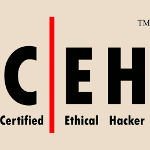macof.py is a MAC address table overflow utility.
The traditional tool for MAC table overflow attacks is macof from the
dsniff project.
However I was not satisfied with this tool.
In particular:
-
macofhas no rate limit mechanism, it sends the packets as fast as the local CPU and the network adapter can support it.This leaves no room for a proper interception of users data.
-
Half of the packets generated by
macofviolates the Ethernet protocol by having the multicast bit set on the sender’s MAC address.As a result, these packets are considered corrupted and silently dropped by the first encountered switch.
In other words, half of the packets generated by
macofare generated for nothing. -
macofconstantly uses random MAC addresses for generated packets, meaning that a given source MAC address is rarely used more than once.This means that switches’ MAC table aging system …






